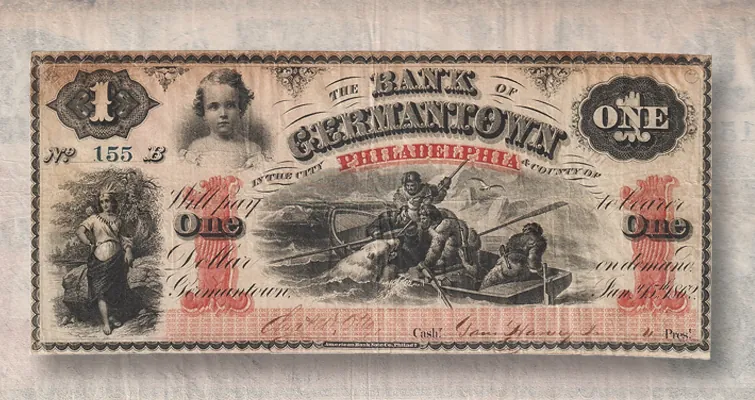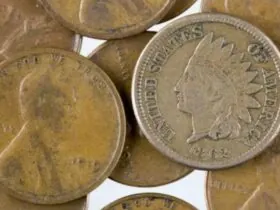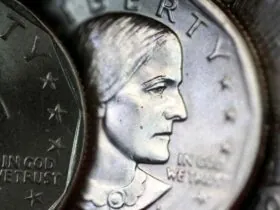The world of rare banknotes is filled with history, artistry, and intrigue, and few notes exemplify this more than the 1862 Bank of Germantown $1 note. Recently graded by the Professional Coin Grading Service (PCGS), this note is a remarkable piece of numismatic history, not only for its rarity but also for its extraordinary design. The note stands out as the first of its kind to be submitted for grading by PCGS Banknote, making it a significant milestone in the world of paper currency.
A Rare Find: The Grading of the 1862 Bank of Germantown $1 Note
This Article Includes [hide]
The Bank of Germantown $1 note is a rare and obsolete piece of currency that holds special historical significance. This particular note was graded by PCGS, which is known for its meticulous grading of both coins and paper currency. The note has garnered attention for its pristine surface quality and the intriguing history behind its design.
“This note is not only remarkable for its rarity but also for its dramatic and detailed artwork,” says Stephanie Sabin, President of PCGS. The rarity of the note, combined with its impressive grade, makes it a prized find in the world of numismatics.
The Artwork: A Polar Bear and Heroic Arctic Exploration
One of the most striking features of the 1862 Bank of Germantown $1 note is its central vignette: a dramatic depiction of a polar bear attacking four men in a boat. The image is not only visually captivating but also deeply symbolic, capturing the spirit of Arctic exploration during the mid-19th century.
This vignette, titled Polar Bear Attack or The White Bear, was engraved by the renowned DeWitt Clinton Hay. The design was adapted from the artwork of Felix O.C. Darley, an internationally known artist of the time. The image portrays a moment of peril and heroism, with the men in the boat facing the formidable polar bear rising from the icy waters. The context of this artwork draws upon the intense public fascination with Arctic exploration, particularly the expeditions of the time in search of the lost ships of explorer Sir John Franklin.
The Historical Context: Arctic Exploration and the Franklin Expedition
The imagery on the note is tied to a significant historical event: the search for Sir John Franklin and his two ships, HMS Erebus and HMS Terror. In the mid-1840s, Franklin embarked on an ill-fated expedition to the Canadian Arctic, during which both ships became trapped in the ice and eventually disappeared. The fate of the crew remained a mystery for many years, with the wrecks of the ships not being discovered until the early 2000s.
The design of the polar bear vignette is not based on a specific historical event but reflects the broader fascination with the Arctic and its dangers during the period. The engraving was completed at the time of Henry Grinnell’s expeditions, which were launched to find Franklin’s lost ships. The search for these ill-fated explorers captivated the public’s imagination, and the polar bear became a symbol of the harsh conditions faced by Arctic explorers.
The Intricate Design: A Masterpiece of Engraving
Beyond the polar bear vignette, the note is filled with intricate details that make it a true work of art. On the left side of the obverse, a Native American princess is depicted, adding to the richness and symbolism of the note. Adjacent to her is a vignette of a young girl’s head, contributing to the complex and layered design of the currency.
The note’s background features a vermillion color tint plate, with the word “PHILADELPHIA” prominently displayed in the title section. The design also includes large, widely spaced “1” protectors on either side, further enhancing the note’s security features. At the bottom of the note is a delicate, micro-lettered guilloche, a design element commonly used to deter counterfeiting and add an extra layer of sophistication to the note.
Conclusion: A Valuable Piece of Numismatic History
The 1862 Bank of Germantown $1 note is more than just a rare piece of currency; it is a testament to the artistry and historical significance of obsolete banknotes. The combination of its stunning artwork, historical context, and exceptional grade makes it a highly sought-after collectible. As one of the few surviving examples of its kind, it represents a unique chapter in the history of American paper currency, offering both numismatists and historians a glimpse into the past, as well as the captivating world of Arctic exploration.
This note’s submission to PCGS Banknote is a milestone in the numismatic community, and it will undoubtedly continue to be a treasured piece for collectors and enthusiasts alike.
Also Read:







Leave a Reply